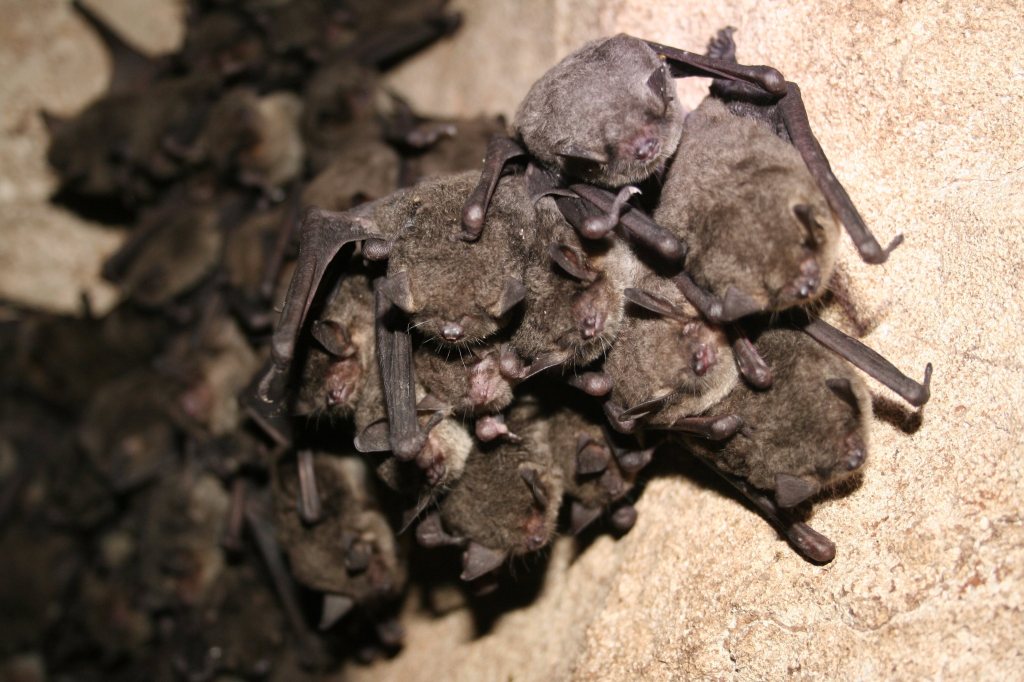Gray bats roost in large concentrations in well-studied caves, but where they go once they leave the caves is not well understood. A new model published in The Journal of Wildlife Management predicts how bats move across the landscape, useful when considering conservation actions and the siting of new development, including wind energy siting.
The Gist
Gray bats, found in the southeastern United States, were listed as federally endangered in 1976. The population has increased substantially, due in large part to the protection of roosting caves. The bats roost in caves year round; in winter they concentrate on a small number of caves, with individual caves hosting as many as 250,000 to 1.5 million bats.
“They put all their eggs in just a few baskets,” says Cory Holliday, lead author of the paper. “We know a lot about these roosting sites. But as soon as they get out on the landscape, flying around, we really don’t have much information.”
Holliday, cave and karst program director for The Nature Conservancy in Tennessee, worked with Conservancy GIS analyst Joseph Wisby and others to develop a model that predicted landscape use by gray bats.
The researchers gathered all occurrence and band recovery data available within the range of the species to model movement. They actively tracked gray bats by attaching transmitters and tracking them via airplane.
By weighting the pathways using the population of winter and summer cave roosts, they created a heat map demonstrating the likelihood of landscape use by gray bats including nightly foraging, migration, and roost switching.
The resulting map highlighted three high-likelihood pathways through central Tennessee and 1 primary migration route between northern Arkansas and central Missouri.
The Big Picture
Cave systems are home to hundreds of species, many of them endemic to these environments. “These systems don’t receive sunlight, so they get their energy from other sources,” says Holliday.
In Tennessee, which has 20 percent of the known cave systems in the United States, roosting gray bats bring an important source of energy to these caves. “The Nature Conservancy has recognized the importance of gray bats to cave and karst systems for a long time,” says Holliday. “Our first preserve acquisition in Tennessee had a cave on it.”
While the caves are now protected, understanding how gray bats move is an important next step. This is especially true with commercial wind energy projects proposed in the southern Appalachians.
The Takeaway
The researchers recognize the need for wind energy to meet renewable energy goals; the model could help guide such development to minimize the impact on bats. Holliday notes that both wind energy companies and regulating agencies have expressed interest in the model already.
He also emphasizes that this is a first step in mapping bat movements. “This is a model, so it’s fallible,” he says. “We are going to continue ground truthing the results, beginning with more tracking of gray bats taking place this spring.”



